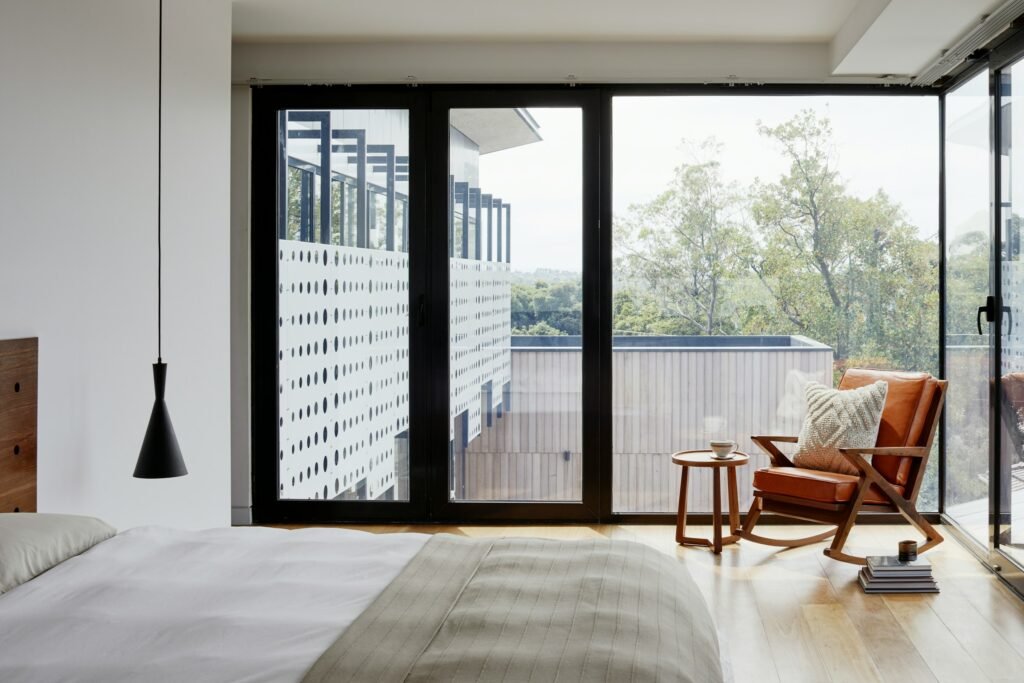Sliding doors are a popular choice in many homes and commercial spaces due to their sleek design, space-saving functionality, and ability to seamlessly integrate indoor and outdoor spaces. However, like any other architectural element, sliding doors require regular maintenance and occasional repairs to ensure smooth operation and longevity. In this article, we’ll explore some common challenges that arise with sliding doors and provide practical tips for overcoming them.

Sticking or Jamming
One of the most common issues with sliding doors is sticking or jamming, which can occur due to dirt, debris, or misalignment of the tracks. To overcome this challenge, start by cleaning the tracks thoroughly with a vacuum cleaner or a stiff brush to remove any dirt or debris that may be causing friction. Next, inspect the tracks for any signs of damage or misalignment and adjust them as needed using a screwdriver or Allen wrench. Lubricating the tracks with silicone-based spray lubricant can also help to reduce friction and ensure smooth operation.
Worn Rollers or Tracks
Over time, the rollers and tracks of sliding doors can become worn or damaged, leading to difficulty in opening and closing the door. To overcome this challenge, inspect the rollers and tracks regularly for signs of wear or damage, such as cracks, dents, or corrosion. If the rollers or tracks are worn out, they will need to be replaced. Replacement rollers and tracks are readily available at most hardware stores and can usually be installed using basic hand tools.
Loose or Damaged Hardware
Another common challenge with sliding doors is loose or damaged hardware, such as screws, bolts, or hinges. Loose hardware can cause the door to sag or become misaligned, leading to difficulty in operation. To overcome this challenge, inspect the hardware regularly and tighten any loose screws or bolts using a screwdriver or wrench. If any hardware is damaged or broken, it will need to be replaced with new hardware of the same size and type.
Seal Failure
Sliding doors often have seals or weather-stripping along the edges to prevent drafts, water leaks, and energy loss. However, over time, these seals can deteriorate or become damaged, leading to seal failure. To overcome this challenge, inspect the seals regularly for signs of wear or damage, such as cracks, tears, or gaps. Replace any damaged seals with new ones to ensure proper insulation and weatherproofing.
Broken Glass
In the case of sliding doors with glass panels, another common challenge is broken or cracked glass. This can occur due to accidental impacts, extreme weather conditions, or structural issues. To overcome this challenge, it’s essential to handle broken glass with extreme caution to avoid injury. Wear gloves and eye protection, and carefully remove any broken glass shards using a vacuum cleaner or duct tape. Once the area is clear, measure the dimensions of the glass panel and order a replacement from a reputable glass supplier. Install the new glass panel according to the manufacturer’s instructions or seek professional assistance if necessary.
Water Infiltration
Sliding doors are often installed in areas prone to moisture, such as bathrooms, kitchens, or outdoor patios. However, water infiltration can occur if the door seals are not properly maintained or if there are gaps or cracks around the door frame. To overcome this challenge, inspect the door seals regularly and replace any damaged seals to ensure proper insulation. Additionally, seal any gaps or cracks around the door frame using caulk or weatherproofing tape to prevent water from seeping in.
Sagging or Misalignment
Over time, sliding doors may sag or become misaligned, leading to difficulty in opening and closing. This can occur due to various factors, such as structural settling, improper installation, or worn-out components. To overcome this challenge, carefully inspect the door frame, tracks, and rollers for any signs of misalignment or damage. Adjust the rollers or tracks as needed to ensure proper alignment and smooth operation. If the door frame is sagging, reinforce it with additional support brackets or shims to restore its stability.
In conclusion, while sliding doors offer numerous benefits in terms of aesthetics and functionality, they require regular maintenance and occasional repairs to ensure optimal performance and longevity. By addressing common challenges such as sticking or jamming, worn rollers or tracks, loose or damaged hardware, seal failure, broken glass, water infiltration, and sagging or misalignment, you can keep your sliding doors in top condition for years to come.